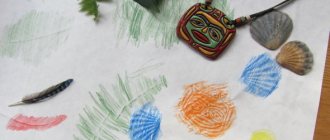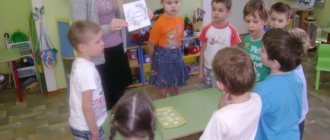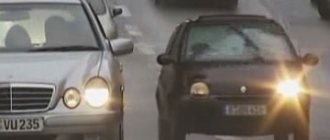Road safety lessons for schoolchildren
Every year on September 1, hundreds of first-graders rush to school. At first they are accompanied by adults, but the time comes, and the boys and girls go to classes on their own. School days are very busy, so children are not always attentive on the road. Our exercises will help you explain and remember the importance of traffic rules.
11 rules that children must follow
- Cross the street at the designated place. A pedestrian crossing with a special sign or traffic light will indicate this.
- Before crossing the road, stop, make sure it is safe, and then cross at a calm pace.
- When crossing the road, look both ways to see if there are any fast-moving cars.
- It is IMPOSSIBLE to cross the roadway when turning!
- Put away your smartphone and headphones and only then cross the road.
- It is PROHIBITED to run out onto the roadway!
- It is IMPOSSIBLE to cross the road between standing cars!
- When traveling in a car, be sure to buckle up! Don't stick your arms or head out the window.
- Take your time, be very careful! The car is very fast and does not always have time to stop immediately.
- Do not walk on the roadway, even near your house, only on sidewalks.
- Drivers may break the rules, so be aware and make sure you are safe before crossing the road.
Road safety, why children get into accidents
Every month there are hundreds of road traffic accidents (RTAs) in which children are injured. During the summer months, such accidents increase markedly.
Unfortunately, children not only get injured, but also die. And this is a real grief for parents and loved ones. How to avoid this? There are several factors that cause children to become involved in road accidents. We will not consider tragic situations when they were injured while in a car involved in an accident, or became the victim of a drunk driver. But even if the accident occurred due to the fault of a child, responsibility for this lies with the adults - the driver did not foresee it, and the parents did not teach it.
Reasons why children become involved in road accidents:
- crossing the road in an unspecified place;
- sudden appearance of a child on the roadway due to a large object (public transport, fence, snow debris);
- crossing the road at an illegal traffic light;
- playing next to or on the roadway;
- cycling, rollerblading, scootering, skateboarding, etc.;
- inattention due to distraction by smartphones, headphones.
In addition to these factors of traffic violations, there are others: physiological and psychological. Due to their age, babies react more slowly, their field of vision is significantly narrowed, hence their poor orientation in space. Also, children under a certain age have a feeling of fear due to an approaching car. After all, in cartoons everything is completely different from real life.
Save and preserve: 7 blogs and projects about child safety
School "LizaAlert"
The website of the volunteer search and rescue team regularly publishes useful tips for children and parents on various topics.
These include detailed instructions on how to escape from a stalker on the street. They also released an analysis for children who are left at home alone (and this often happens during distance learning). The cards describe what to do if strangers try to get into the apartment and what tricks they can use to deceive the child. The school also conducts online classes where instructors review safety rules and answer questions from children and parents.
School "Stop the threat"
This school usually conducts classes offline (there are branches in many large cities, so getting to a lesson will not be difficult), but during the pandemic, online classes have also appeared. During the lessons, children are taught how to protect themselves from kidnappers, are told about the rules of behavior on the Internet (there are also a lot of threats there), and much more. Instructors conduct trainings for parents and children, individual and group lessons. The courses are paid, but there is one free webinar.
Lessons from Foxford School
The course is designed for children aged four years and older. Parents will not have to persuade their child to watch the lessons, because they are taught by Masha and the Bear from the cartoon of the same name. During the classes they talk about how to communicate with peers, escape from a fire, and much more. There are several lessons dedicated specifically to interacting with strangers. You can watch the first lesson for free, get a checklist for parents and take the test. The full version has more lessons, tests and homework available. It costs 3490 rubles.
Olga Bochkova Security Academy
The Academy offers both face-to-face training and online lessons and video courses on safety for children and their parents. Topics range from behavior with acquaintances and strangers at home, on the street and on the Internet, protecting personal and intimate boundaries, preventing bullying and cyberbullying, to rescue in emergency situations.
The average cost of online lessons is 450-500 rubles, there are video courses with interactive videos, gamification, training, prizes and expert support. The cost depends on the volume of the course and the level of participation - from 1,700 rubles.
On her blog on Instagram @olga.bochkova.academy, psychologist, teacher and security expert Olga Bochkova analyzes situations and gives specific recommendations to adults - parents, teachers, social workers - on how to raise children so that there is less violence in the world, and in the event of a collision With him, the children knew how to protect themselves.
Course by Saule Utegalieva
Before purchasing this course, parents can also take a short test and discuss it with their children to check what knowledge they lack. The course contains useful tips that will teach you how to talk to your child about safety. The author of the course explains how to come up with a family password, create a list of rules, spot threats, and much more. The course contains eight lessons, flashcards with lesson plans, and a workbook with additional materials. With a discount, the course costs 16,497 rubles.
Lessons from Yulia Yarmolenko
A teacher conducts sex education lessons for parents and children. Also on her website there are articles and a lot of material about protection from strangers. The author explains how to teach a child to build personal boundaries and respond correctly to violence. The article describes at what age you can discuss different dangers with your child. The material contains useful videos and stories. For parents who want to study the topic in more detail, the author recommends books.
Knowledge base on docdeti.ru
The site contains articles about children's health and safety, including material on underwear rules. This is an easy-to-remember basic list of rules that will help your child understand the importance of personal boundaries, teach them to communicate with relatives and strangers, and share their problems with loved ones.
Read more on the topic
How to help a young child understand his bodily boundaries
Child sexual abuse: stories of adult victims in their own memories
Playground safety: what to look for, how to prevent injury and why falls can be beneficial
Series of conversations “Security Lessons”
5. Practical work
Which road sign told your friends where to cross the road?
Let's draw it now.
6. Conclusion
This road sign is an assistant to pedestrians, and they should be friends with it.
There are many different road signs on the streets and roads. They are the best assistants and friends for drivers and pedestrians; they tell you what the road is like, how to drive, what is allowed and what is not allowed. Be careful on the roads, guys!
Conversation No. 3
Topic : Dangerous situations on the street and in the yard.
Tasks:
Teach children to behave correctly in situations of discovering unfamiliar objects and when meeting unfamiliar people.
Develop the ability to objectively evaluate the positive qualities of people.
Cultivate attentiveness and caution in children.
Equipment: flat images of trees, a house, a beautifully packaged box, toys or pictures with images of a bunny and a squirrel, a large hare.
Preliminary work: conversation about the discrepancy between the pleasant appearance and good intentions of strangers, about the rules of behavior when discovering unfamiliar objects
Vocabulary work: kidnapper, good, evil, packaging, many-faced, attacker
1. Introductory conversation by the teacher.
Guys! We live in a huge, diverse world of people. Adults take care of children, love, protect them, want you to grow up healthy, strong, smart, honest, kind.
But, unfortunately, there are also people who do evil. They rob, kill, steal people and commit various heinous crimes.
A person with evil thoughts and plotting evil is called an evildoer.
What harm could such a person cause to you and your family?
How to learn to understand people, guess who is good and who is evil?
2. Today, guys, we will meet a little squirrel and a little hare again. You will find out what dangers awaited your friends.
3. Demonstration of tabletop theater with speech accompaniment.
Friends are running through the forest back home: a little squirrel is jumping on tree branches, a little hare is walking along a path between the bushes.
Suddenly the little bunny saw a beautiful box tied with a large bow. He called a friend to see what was inside. Coming closer to the box, the friends heard the ticking of a clock. The little squirrel remembered how at the forest school their teacher Badger talked about such strange finds that could bring trouble. Without thinking twice, they called their teacher. He thanked his friends for their attentiveness, caution and vigilance. (Physical minute)
Having run to the house, the little hare noticed some strange, unfamiliar uncle hare walking around their home. The little hare quickly jumped up to him and began to ask who he was and what he was doing near their house. To which the stranger politely replied that he was a friend of his father, he was passing through here, and he wanted to meet him. So he wants to wait for him at home. The little hare had completely forgotten how dangerous it is to talk with strangers.
Road safety lessons for kids
Little ones very rarely find themselves on the road alone without adults, but this does not mean that they do not need to be introduced to traffic rules. Adults should constantly tell them what to do when near the roadway, draw their attention to road signs and reinforce the meaning of traffic light colors. Simple and important safety lessons can help with this.
Lesson 1. Road at the entrance
Road traffic begins not with a traffic light at an intersection, but with the first steps at the entrance. Cars drive near the house, near a kindergarten or school, near a store, and on wide streets. Be careful wherever cars are driving!
Lesson 2. Rules for riding bicycles and scooters
- put on a helmet before riding your bike;
- You can only ride a bike or scooter on the sidewalks. Even in the courtyard of the house you cannot drive on the road where cars are passing;
- before crossing the road you need to get off your bike or scooter;
- You can only cross the roadway at a calm pace;
- When moving along the sidewalk, you need to be careful of passers-by.
Road safety for children
You should not rely on the fact that after looking at a colorful poster on the topic of road safety, your child will learn everything and behave correctly. How, then, can we teach children these important fundamentals? A systematic, comprehensive approach is needed. Parents and teachers should unobtrusively and constantly tell what not to do and explain what violations of the rules can lead to. Don’t forget about your own example of how to follow traffic rules.
Methods of teaching children safe road traffic
To make it easier for your child to learn the basics of road safety, use a variety of methods. This will help you learn the skill of safe behavior more effectively.
- About the explanatory and illustrative method Talk with your child, read books with stories about the rules of behavior on the street and the road, study road signs, look at posters, play educational games and watch educational cartoons together.
- Practical method When outside, draw children's attention to the road, signs, cars and other pedestrians. Simulate driving situations at home using toys.
- Artistic method Coloring, crafts, drawings, applications on this topic help to consolidate the acquired knowledge.
- Game method Role-playing games are a great way to apply acquired knowledge and try yourself in different roles. Create situations in the game that can happen in reality: for example, play as a passenger and a bus driver, as a pedestrian and as a taxi driver.
Perform developmental exercises from Ikyusha
Mathematics
Reading
The world
Logics
English language
Lesson 3. Stop, Look, Move!
Teach your child to ALWAYS stop in front of the road, even if:
- the traffic light is green,
- people cross the roadway
- you're in a big hurry,
- the ball or scooter rolled out onto the roadway.
Look around and make sure there are no moving cars nearby. Then cross the road at a calm pace.
Lesson 4. Toys on the road are dangerous!
Balls, cars, balls, rollercoasters and other entertainment can be a disservice if they are located next to the highway.
You MUST NOT play with any toys or toys near the road; they may roll away and get hit by a car.
When crossing the roadway, you need to hold the toy very tightly or give it to your parents so that it does not accidentally fall out. Even if suddenly an object appears on a zebra crossing, you need to calmly cross the road. Adults will take the toy out of the way themselves.






